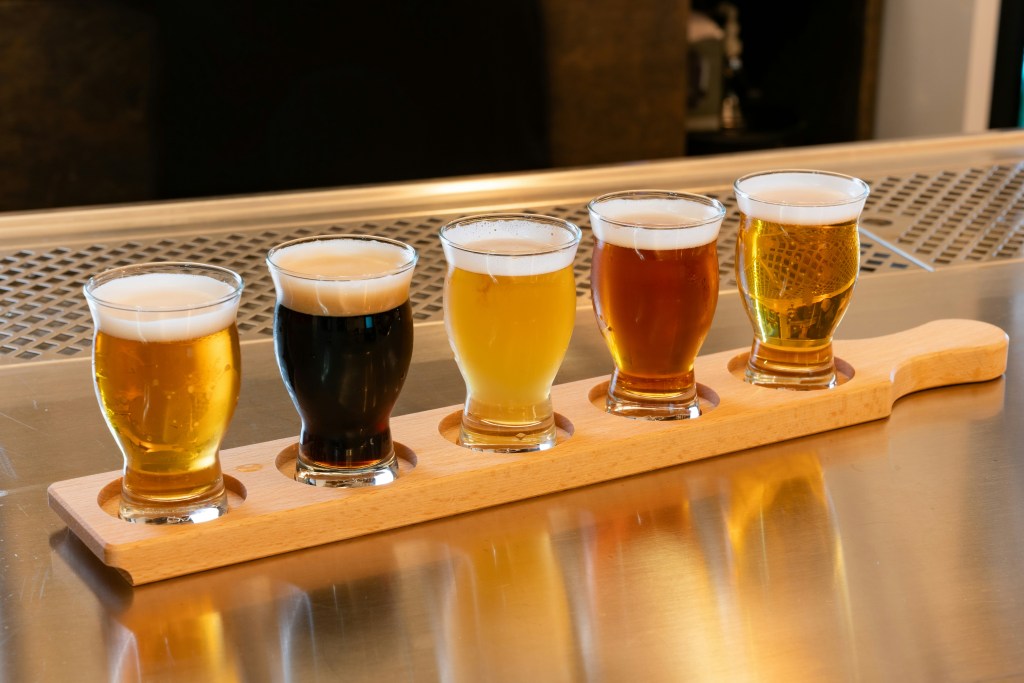When it comes to variety and innovation, few categories are as bubbly as the U.S. beer market. And while it’s been a few years since craft beer growth was at its apex, the now-mature craft subcategory is anything but sparse when it comes to new offerings. This undoubtedly gives consumers a wealth of options and varieties to choose from, but it poses an array of challenges for brewers and retailers looking to appease evolving consumer tastes.
From a retail perspective, assortment and shelf placement are paramount. And at the same time, retailers need to ensure that popularity never leaves their shelves bare. That’s a tall order, particularly when you consider that the U.S. beer market continues to expand in terms of product assortment—despite slowed category growth. According to NielsenIQ TDLinx, the average liquor store has just under 1,400 beer items in stock at any given time. That’s up from just over 1,300 back in 2014.
Unfortunately, the increased variety has not translated into increased sales for the overall beer category. Back in 2015, off-premises large-format (retail) beer sales were posting growth of 5%. At the start of this year, growth had fallen to below 1%.
!function(e,t,s,i){var n=”InfogramEmbeds”,o=e.getElementsByTagName(“script”),d=o[0],r=/^http:/.test(e.location)?”http:”:”https:”;if(/^/{2}/.test(i)&&(i=r+i),window[n]&&window[n].initialized)window[n].process&&window[n].process();else if(!e.getElementById(s)){var a=e.createElement(“script”);a.async=1,a.id=s,a.src=i,d.parentNode.insertBefore(a,d)}}(document,0,”infogram-async”,”//e.infogram.com/js/dist/embed-loader-min.js”);
Digging below the surface of the total category, we can see that some subcategories, particularly above-premium offerings, are seeing growth. Without overall category growth, however, the subcategory growth simply means that other subcategories (e.g., traditional budget, domestic premium) are falling out of favor.
!function(e,t,s,i){var n=”InfogramEmbeds”,o=e.getElementsByTagName(“script”),d=o[0],r=/^http:/.test(e.location)?”http:”:”https:”;if(/^/{2}/.test(i)&&(i=r+i),window[n]&&window[n].initialized)window[n].process&&window[n].process();else if(!e.getElementById(s)){var a=e.createElement(“script”);a.async=1,a.id=s,a.src=i,d.parentNode.insertBefore(a,d)}}(document,0,”infogram-async”,”//e.infogram.com/js/dist/embed-loader-min.js”);
As consumers become more discerning and their tastes more refined, many are shifting to above-premium beers, ciders, “sessionable” options (those with typically lower alcohol levels), and emerging options like hard teas and seltzers. And to keep up with changing consumer demand, retailers have been accommodating new products, segments, and brands on their shelves. But with limited space available, the shelf shuffle is now a delicate balancing act. Even small amounts of shelf space gained or lost can tip the scales for any manufacturer.
In light of a surge of new products and evolving consumer palates, retailers are stocking their shelves with increasing amounts of new offerings. And since shelf space is finite, the shift is eating away at the shelf space of bigger brands—ones that previously stood alone. The bigger brands still dominate the shelf overall, but their overall footprint is shrinking. That’s where understanding what’s happening directly on the shelf—across competition and category—provides brands with a road map to maximize their shelf space potential. With that level of insight, innovating and implementing isn’t a guessing game.
Shoppers often make decisions on which brand to buy while they are browsing the beer aisle. Therefore, getting the right placement and space allocation is critical to capturing the beer shopper’s attention.
As brick-and-mortar retail formats continue to evolve, adult beverage categories have an opportunity to expand impulse purchases. The growth of groceraunts, for example, presents new opportunities for displays and assortment options for beer, particularly within the cold box.
As alternative and on-the-go packaging continue to expand in wine, particularly with canned wine and single-serve bottles, there will be an increasing fight for beer to maintain that critical space in the cold box.
Fulfillment is another area that’s holding some of the big brands back. With time being more critical than ever, larger companies risk their market share—and they risk losing more of it—by not shortening their order fulfillment rates. At the retail store, empty shelves mean lost potential revenue. Empty shelves also give other brands an opportunity to move in to the vacant space.
There’s no denying that the U.S. beer market is in the midst of significant change, and there’s no sign of this changing. With change comes opportunity, and that opportunity is available to both large and small manufacturers. As retailers continuously leverage shelf space to meet consumer demand, manufacturers need to take control of their destiny by keeping a vigil on new launches and ensuring they maintain their fair share of shelf.
For an in-depth look at how an array of beer brands are tackling the challenges associated with fulfillment, shelf placement, and promotional mix amid a time of significant change, download The Changing Face of Beer Retailing in the U.S. report from Trax and NielsenIQ.




